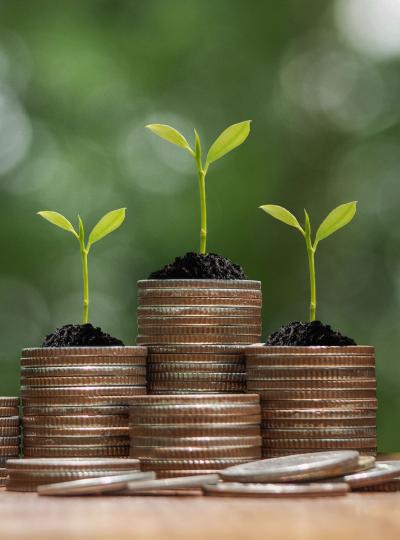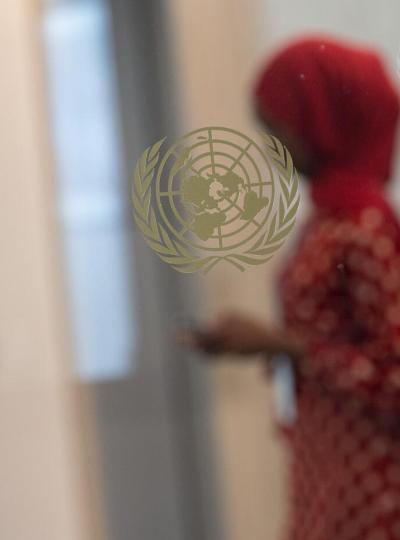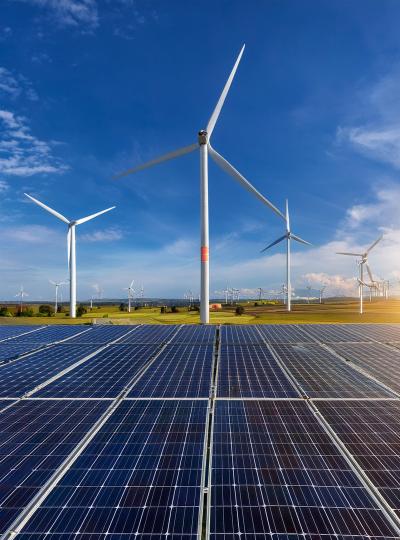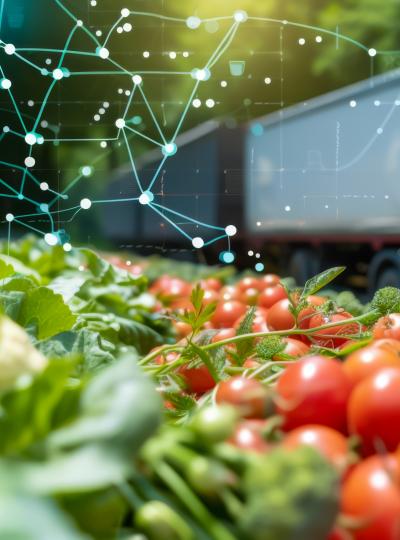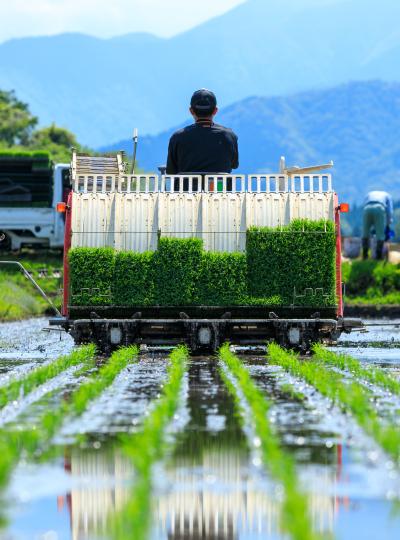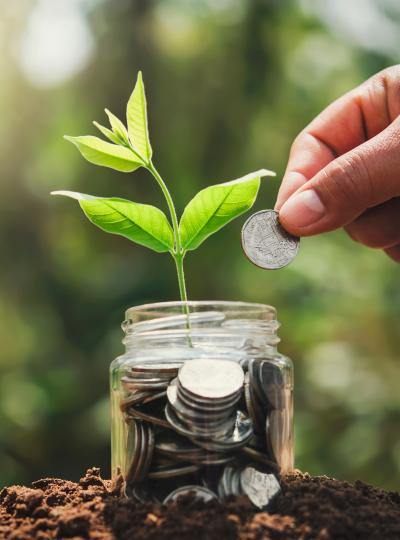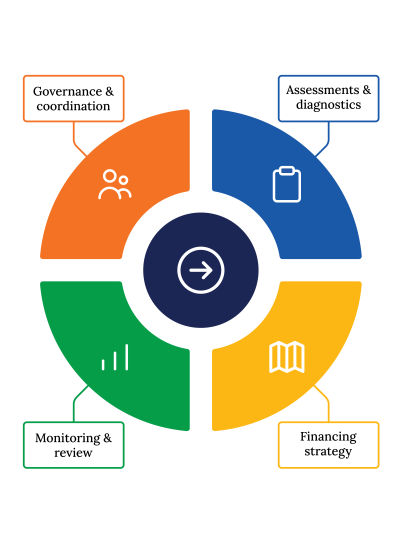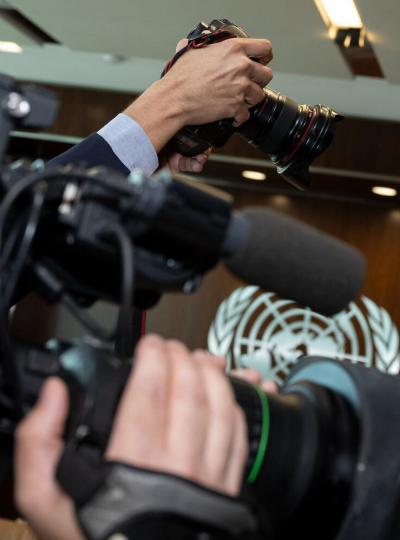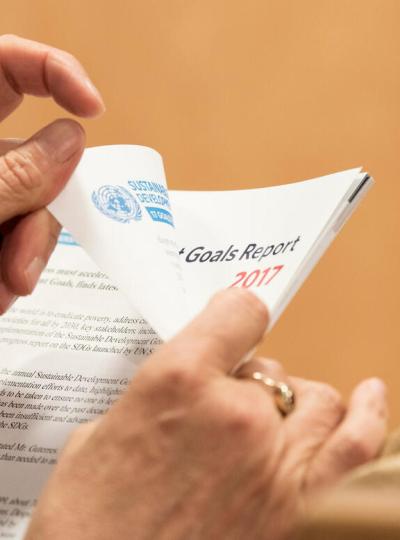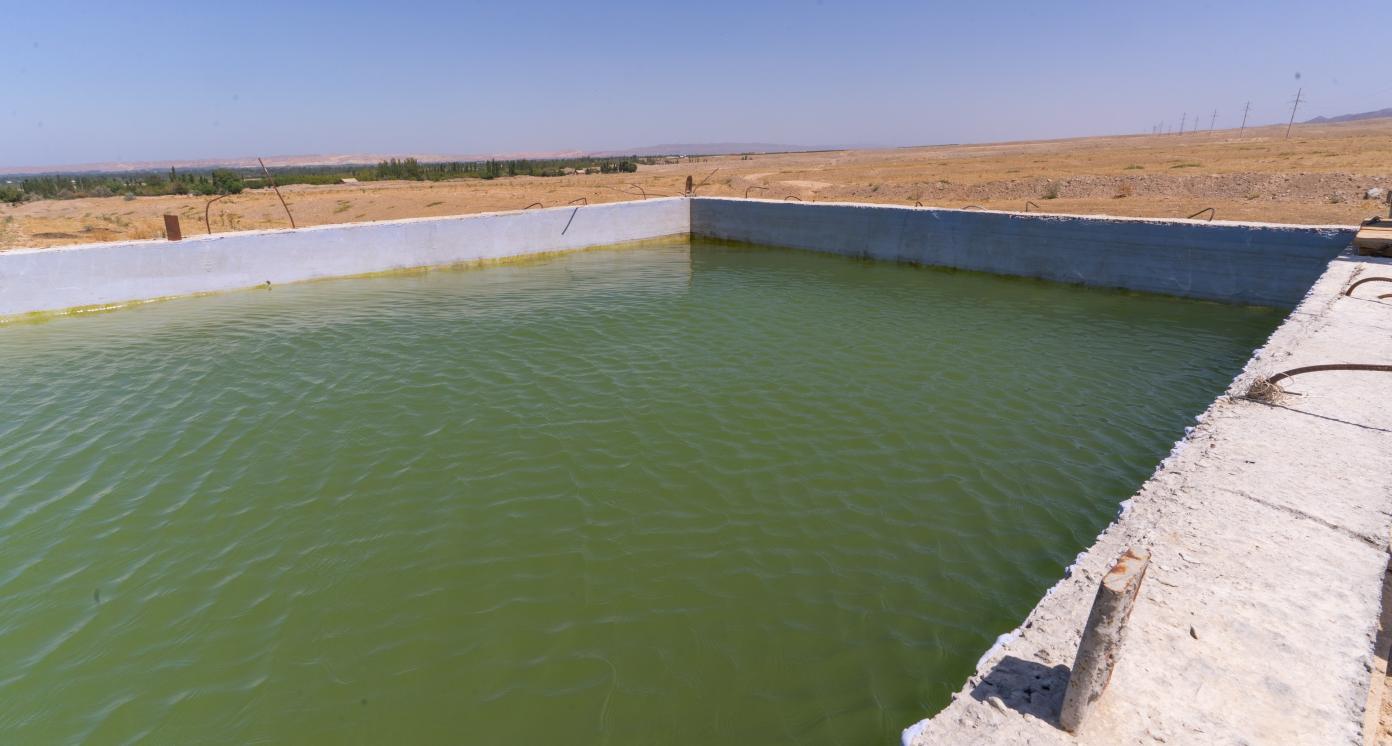Rainbow Trout Farming in Water Basins of Hydropower Plants
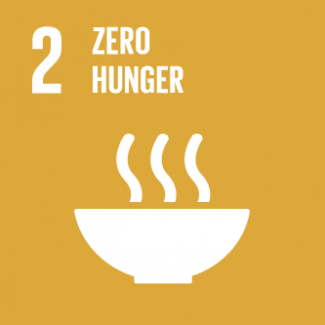
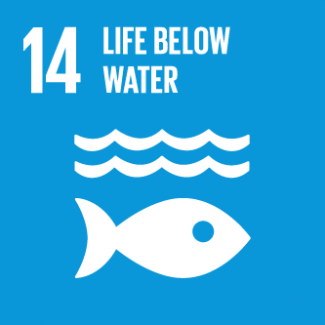
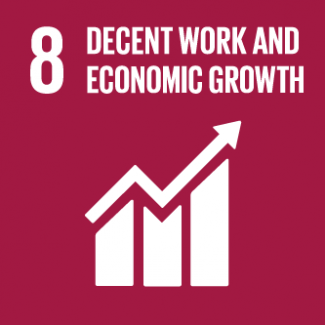
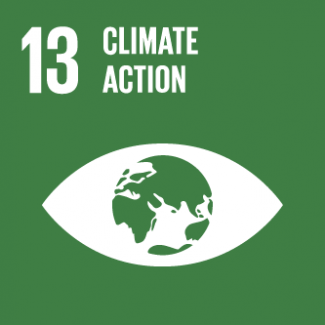
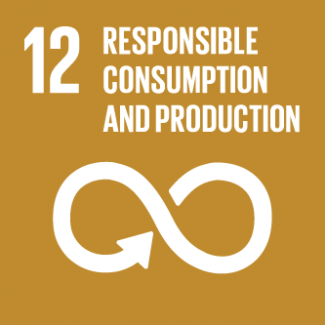
Business Model Description
Grow rainbow trout in cage farms in water basins of the hydroelectric power and dams and sell, processed or raw products to the domestic market via retail stores, restaurants, and hotels.
Expected Impact
Increase food security, diversify the diet, create jobs for women and youth, and boost the income of the local businesses.
How is this information gathered?
Investment opportunities with potential to contribute to sustainable development are based on country-level SDG Investor Maps.
Disclaimer
UNDP, the Private Finance for the SDGs, and their affiliates (collectively “UNDP”) do not seek or solicit investment for programmes, projects, or opportunities described on this site (collectively “Programmes”) or any other Programmes, and nothing on this page should constitute a solicitation for investment. The actors listed on this site are not partners of UNDP, and their inclusion should not be construed as an endorsement or recommendation by UNDP for any relationship or investment.
The descriptions on this page are provided for informational purposes only. Only companies and enterprises that appear under the case study tab have been validated and vetted through UNDP programmes such as the Growth Stage Impact Ventures (GSIV), Business Call to Action (BCtA), or through other UN agencies. Even then, under no circumstances should their appearance on this website be construed as an endorsement for any relationship or investment. UNDP assumes no liability for investment losses directly or indirectly resulting from recommendations made, implied, or inferred by its research. Likewise, UNDP assumes no claim to investment gains directly or indirectly resulting from trading profits, investment management, or advisory fees obtained by following investment recommendations made, implied, or inferred by its research.
Investment involves risk, and all investments should be made with the supervision of a professional investment manager or advisor. The materials on the website are not an offer to sell or a solicitation of an offer to buy any investment, security, or commodity, nor shall any security be offered or sold to any person, in any jurisdiction in which such offer would be unlawful under the securities laws of such jurisdiction.
Country & Regions
- Kyrgyzstan: Jalal-Abad Oblast
- Kyrgyzstan: Chui Oblast
- Kyrgyzstan: Issyk-Kul Oblast
- Kyrgyzstan: Naryn Oblast
Sector Classification
Food and Beverage
Development need
Kyrgyzstan is highly dependent on imported food due to low productivity and output in the food sector. The country is a net importer of meat and depends on imports of fats, oil, and sunflower seeds, over 90% of which comes from Russia, Belarus or Ukraine. In 2023, 30% of the population lived below the poverty line, spending over 60% of the income on basic food needs (1, 2, 3, 4).
Policy priority
The Programme for the Development of the Food and Processing Industry during 2023-2027 aims to ensure food security, efficient use of raw materials, provision of government lending, and attracting investments in the sector. The National Development Strategy for 2018-2040 emphasizes the role of medium and large processing complexes and logistics centers in boosting export (5, 6).
Gender inequalities and marginalization issues
The gender-segregated data on land ownership is limited and outdated but reveals that women report themselves as agricultural land owners less often than men. Despite equal legal rights to land resources between men and women, women tend to be excluded from land governance and decision-making (7).
Investment opportunities introduction
In 2023, the food industry, including beverage and tobacco production, has generated approximately USD 830 million in output. The main opportunities in the food sector lie in sugar production, tobacco-fermentation plants, horticultural processing, meat processing, and logistics centres (8, 9).
Key bottlenecks introduction
Climate change, affecting agricultural outputs and prices, supply-chain shocks caused by the COVID-19 pandemic and conflict between Eastern European countries, which are major food importers to Kyrgyzstan, significantly affected the development of the food and beverage sector in recent years (1, 4, 10).
Food and Agriculture
Development need
Post-harvest losses remain significant, with 30-40% of produce lost during collection, transportation, and storage processes. Despite being a livestock country, 87% of pastures in Kyrgyzstan are degraded at least one season per year. Limited access to high-quality seeds contributes to low seed replacement rates, resulting in reduced yields of fodder and feed crops (11, 12).
Policy priority
Nationally Determined Contributions (NDC) target reducing agricultural greenhouse gas emissions by optimizing livestock numbers, enhancing pedigree stock, expanding organic crop farming, and increasing manure use as fertilizer. The 2024-2028 Green Economy Programme promotes resource-efficient, eco-friendly farming (13, 14).
Gender inequalities and marginalization issues
The rural population predominates in Kyrgyzstan, with nearly 65% living in rural areas. Of these, 20% are engaged in agriculture and the majority work informally. In 2021, one in three, or 35%, informally employed women worked in agriculture (11, 15).
Investment opportunities introduction
In 2023, foreign direct investments in agriculture amounted to USD 667,000. Bank loans in the sector increased by 11.6% in 2024, reaching KGS 47 billion (USD 649 million). There are opportunities to invest in storage facilities, berry growing, fish breeding, dairy farms and cheese production, trout farming, and organic production (16, 17, 18).
Key bottlenecks introduction
Low levels of skills in land management, harvest techniques, animal husbandry and veterinary practices, as well as obsolete agricultural equipment significantly hinder the sector’s development (11).
Agricultural Products
Pipeline Opportunity
Rainbow Trout Farming in Water Basins of Hydropower Plants
Grow rainbow trout in cage farms in water basins of the hydroelectric power and dams and sell, processed or raw products to the domestic market via retail stores, restaurants, and hotels.
Business Case
Market Size and Environment
USD 100 million - USD 1 billion
20,700 tons
As of 2023, commercial fish production amounted to 20,700 tons, while the country’s potential is estimated at 150,000 to 200,000 tons per annum (21, 22).
Given the annual production volume of 20,700 tons and private estimations that one kilogram of rainbow trout has a market price of around USD 7, the market size roughly totals USD 144.9 million (22).
Indicative Return
> 25%
The National Investments Agency identified a USD 30 million project to grow rainbow trout in the Kurpsai reservoir with an internal rate of return (IRR) of 43% in five years (19).
Investment Timeframe
Short Term (0–5 years)
The private company operating in aquaculture in Kyrgyzstan reports a payback period of 3-4 years, depending on the type of fish (22).
The National Investments Agency identified a USD30 million project to grow rainbow trout in the Kurpsai reservoir with a payback period of 1.9 years (19).
Ticket Size
USD 1 million - USD 10 million
Market Risks & Scale Obstacles
Market - Highly Regulated
Market - High Level of Competition
Impact Case
Sustainable Development Need
In 2020, the gross production of fish products amounted to KGS 853.5 million (USD 9.8 million) or 0.3% of all agricultural products in the country. As a result, the Kyrgyz Republic produced only 11% of fish and fish products of average healthy physiological consumption norms in that year (19, 23).
The country produces only ~13% of its fish potential, however, government support, particularly in terms of subsidies is absent and hinders the development of the sector (6, 22).
Gender & Marginalisation
Although there were 43.4% of women employed in agriculture, forestry and fishing in 2020, women make up only 21.4% of the managers in the sector (24).
In 2022, youth unemployment among individuals aged 15 to 28 reached 8.4%. Meanwhile, employment in the agriculture, forestry, and fisheries sector has continued to decline; by 2018, only 115,700 young people were employed in this sector, compared to a total labour force of 2,543,700 (25, 41, 42).
Expected Development Outcome
Rainbow trout farming improves the food security in the country, promoting a healthy balanced diet rich in omega-3 and omega-6 fatty acids.
Rainbow trout farming expands the country's potential for fish farming and investments in the business model provide the necessary support for the development of the sector.
Gender & Marginalisation
Rainbow trout farming creates new opportunities for expanded youth and women employment in the sector, particularly in the managerial positions for the latter.
Primary SDGs addressed

2.1.1 Prevalence of undernourishment
2.4.1 Proportion of agricultural area under productive and sustainable agriculture
The proportion of population with undernourishment in 2022 amounted to 47.35% (26).
The area under organic agricultural production totalled 64,996 hectares in 2023 (14).
The area allocated to organic agricultural production is targeted to reach 71,000 hectares by 2028 (14).

14.7.1 Sustainable fisheries as a proportion of GDP in small island developing states, least developed countries, and all countries. In particular, the proposed aquaculture is terrestrial and therefore conserves the marine biodiversity of the Gulf.

8.3.1 Proportion of informal employment in total employment, by sector and sex
Employment in the informal sector rose to 1,754,600 people (1,139,400 men and 589,400 women), where employment in the informal sector of agriculture was the highest, 343,000 people (27).
Secondary SDGs addressed


Directly impacted stakeholders
People
Gender inequality and/or marginalization
Corporates
Indirectly impacted stakeholders
Corporates
Outcome Risks
Fish farming that promotes the growing of fish in greater numbers than in the wild can potentially cause disease outbreaks due to the number of individual animals living close to each other (28).
Impact Risks
Lack of mobile veterinary teams and services as well as low awareness among rainbow trout farmers about the resolution of epizootic risks can hinder the impact of this business model (6).
If there is an insufficient quantity of locally produced feed for trout, which would ensure growth and low feed efficiency, the impact of this IOA will be lower than expected (6).
Impact Classification
What
Rainbow trout farming improves food security in the country, supports the balanced diet of the population, creates new employment opportunities, and generates income for businesses.
Who
The general population, rural residents, particularly women and youth, and fish farmers and processors benefit from enhanced fish production in the country.
Risk
Insufficient quantities of locally produced feed and a lack of veterinary teams able to mitigate epizootic risks can restrict the impact of rainbow trout farming.
Contribution
Rainbow trout farming boosts food security by meeting the demand for local fish, also addressed through the production and processing of other nutritious foods.
How Much
Rainbow trout farming can contribute to generating KGS 3.02 billion (USD34.5 million) in gross income and creating 37,100 additional jobs (29).
Impact Thesis
Increase food security, diversify the diet, create jobs for women and youth, and boost the income of the local businesses.
Enabling Environment
Policy Environment
The Programme for the Development of the Food and Processing Industry with Cluster Development, 2023-2027, 2023: promotes the development of the fish clusters; provides for the launch of concessional loans for fish farmers with fish assets as collateral and tax exemptions (6).
The Fisheries and Aquaculture Development Program, 2019-2023: aimed to create legal and economic conditions for the creation of a modern and sustainable fishery complex in the Kyrgyz Republic, achieving 15,100 tons of commercial fish production (29).
National Development Programme until 2026, 2021: outlines the development of agriculture and processing as a key economic development priority and proposes the development of fish farming as one of the projects under its programme (30).
National Development Strategy for 2018-2040, 2018: envisions Kyrgyzstan as a producer of high-quality organic agricultural products, which ensures food security and nutrition while improving the country's food independence and providing food accessibility for the population (5).
Financial Environment
Financial incentives: The government provides preferential loans to fish farms under the programme of lending to the agro-industrial complex with a term of 3-5 years and an interest rate of 6% p.a. (35).
Fiscal incentives: According to Article 239 of the tax code of the Kyrgyz Republic, agricultural producers receive income tax incentives, particularly VAT exemptions on imported fish feed for fish farmers (36).
Regulatory Environment
Law No. 35 On aquaculture, fisheries and protection of aquatic biological resources, 2021: outlines the use of water bodies and aquatic bioresources, veterinary and sanitary requirements, government support, and research and development, and defines the types of fishing (31).
Law No. 66 On investments, 2003: establishes the basic principles of the state investment policy, providing fair, equal legal treatment to investors and guaranteeing the protection of their investments in the economy of the Kyrgyz Republic (32).
Law No. 98 On the public-private partnership, 2021: provides definitions of the parties participating in PPP projects, their roles and responsibilities, allowing for opportunities for VAT exemptions and tax deferment, a moratorium on inspections for up to 3 years, and other benefits (33).
Law No. 166 On the development of agriculture in the Kyrgyz Republic, 2009: regulates entities' relations to develop the agro-food sector and identifies fisheries as one of the main areas of government support (34).
Marketplace Participants
Private Sector
Aqua Servis LLC, Adel Forel, Kubanychbekov Zhuman.
Government
Ministry of Water Resources, Agriculture, and Processing Industry of the Kyrgyz Republic, Ministry of the Economy and Commerce, National Investments Agency under the President, PPP Center.
Multilaterals
Food and Agriculture Organization (FAO), Asian Development Bank (ADB), World Bank, Delegation of the European Union to the Kyrgyz Republic.
Non-Profit
Association of fish farms.
Public-Private Partnership
Two agreements, worth USD 350,000 and USD 707,000, were signed to develop fish farms in Kyrgyzstan. One involves the Departments of Fisheries and Water Management partnering with a private company to establish full-cycle fish farming (39, 40).
Target Locations
Kyrgyzstan: Jalal-Abad Oblast
Kyrgyzstan: Chui Oblast
Kyrgyzstan: Issyk-Kul Oblast
Kyrgyzstan: Naryn Oblast
References
- (1) World Food Programme. 2021. Food Security Situation in the Kyrgyz Republic. https://www.fsinplatform.org/sites/default/files/resources/files/WFP-0000124521.pdf
- (2) UNDP. 2023. Development Finance Assessment. https://www.undp.org/kyrgyzstan/publications/development-finance-assessment-kyrgystan
- (3) National Statistical Committee of the Kyrgyz Republic. 2023. Number of households with expenditure below subsistence level. https://stat.gov.kg/en/statistics/download/dynamic/538/
- (4) World Bank Group. 2022. Agrifood trade and food security in Central Asia: Possible implications of the war in Ukraine. https://documents1.worldbank.org/curated/en/099614301182328659/pdf/IDU099aa8f43031360476b0ba0e0c5517feb727f.pdf
- (5) The Government of the Kyrgyz Republic. 2018. National Development Strategy of the Kyrgyz Republic for 2018-2040. https://www.fao.org/faolex/results/details/en/c/LEX-FAOC203822/
- (6) Правительство Кыргызской Республики. 2023. Программа развития пищевой и перерабатывающей промышленности Кыргызской Республики на 2023-2027 годы с применением кластерного развития. https://cbd.minjust.gov.kg/53-339/edition/1035/ru
- (7) CIFOR-ICRAF, IFAD. 2023. Women's Land Rights in the Kyrgyz Republic. https://www.cifor-icraf.org/publications/pdf_files/Books/Socio-legal-review-Kyrgyz.pdf
- (8) National Statistical Committee of the Kyrgyz Republic. 2023. Volume of industrial goods production by types of economic activity. https://stat.gov.kg/en/opendata/category/361/
- (9) Национальное агенство по инвестициям при Президенте Кыргызской Республики. 2021. Инвестиционные проекты в сфере сельского хозяйства. https://invest.gov.kg/Инвестиционные-проекты-в-сфере-сельхоз-РУС.pdf
- (10) Asian Development Bank. 2020. COVID-19 pandemic impacts on food security in Central and West Asia. Key issues and strategic options. https://www.adb.org/sites/default/files/publication/656091/cwwp-009-covid-19-impacts-food-security.pdf
- (11) IFAD. 2021. COSOP results review. https://www.ifad.org/en/w/corporate-documents/regions-countries/kyrgyzstan-cosop-results-review-2021
- (12) IFAD, FAO. 2023. Low carbon and resilient livestock development in Kyrgyzstan. https://openknowledge.fao.org/server/api/core/bitstreams/3e8893c7-5e23-4890-8b38-b1d65538322b/content#:~:text=The%20new%20IFAD%20project%20would,reducing%20the%20overall%20quantity%20needed.
- (13) The Government of the Kyrgyz Republic. 2021. Updated Nationally Determined Contributions 2021. https://unfccc.int/sites/default/files/NDC/2022-06/%D0%9E%D0%9D%D0%A3%D0%92%20ENG%20%D0%BE%D1%82%2008102021.pdf
- (14) Министерство Кыргызской Республики. 2024. Программа развития зеленой экономики в Кыргызской Республике на 2024-2028 годы (Проект). https://mineconom.gov.kg/froala/uploads/file/3bd5db922cf87fc28a0f3cbeced8e2bbe286956c.pdf
- (15) UN Women. 2023. Sustainable Development Goals and Gender in the Kyrgyz Republic. https://data.unwomen.org/sites/default/files/documents/Publications/2023/Kyrgyz-SDG-gender.pdf
- (16) National Statistical Committee of the Kyrgyz Republic. 2023. Foreign Investment in 2023. https://stat.gov.kg/en/statistics/download/operational/1763/
- (17) National Bank of the Kyrgyz Republic. 2024. Trends of banking sector development. https://www.nbkr.kg/index1.jsp?item=80&lang=RUS
- (18) National Investments Agency under the President of the Kyrgyz Republic. 2021. Investment projects. https://invest.gov.kg/ru/2021/12/07/test/
- (19) Национальное агенство по инвестициям при Президенте Кыргызской Республики. 2022. Проект увеличения объема выращивания радужной форели на Курпсайском водохранилище. ОсОО "Аква Сервис". https://invest.gov.kg/wp-content/uploads/2021/12/17.pdf
- (20) Bishkek Investment Forum projects, 2024 (available per request).
- (21) 24kg news agency. 2023. Fish production doubles for 12 months in Kyrgyzstan. https://24.kg/english/264897__Fish_production_doubles_for_12_months_in_Kyrgyzstan/
- (22) Stakeholder consultation with a private company in aquaculture, December 2024. "23) Национальный статистический комитет Кыргызской Республики. 2022. Статистика Целей устойчивого развития в Кыргызской Республике Национальный статистический комитет Кыргызской Республики. Статистический сборник. https://stat.gov.kg/media/publicationarchive/4a1e1435-df27-4fdc-9847-a546b33ca21c.pdf"
- (24) National Statistical Committee of the Kyrgyz Republic. 2021. Women and Men of the Kyrgyz Republic. https://stat.gov.kg/media/publicationarchive/8f7fc721-c04b-4376-b411-03777feef9a5.pdf
- (25) Национальный статистический комитет Кыргызской Республики. 2020. Молодежь в Кыргызской Республике 2014-2018. https://stat.gov.kg/media/publicationarchive/38e3432d-6a3d-4613-8a3f-9d87fd4621ac.rar
- (26) Национальный статистический комитет Кыргызской Республики. 2022/ Цели Устойчивого Развития в Кыргызской Республике. Распространенность недоедания (показатель 2.1.1). https://sustainabledevelopment-kyrgyzstan.github.io/2-1-1/
- (27) Национальный статистический комитет Кыргызской Республики. 2022/ Цели Устойчивого Развития в Кыргызской Республике. Занятость в неформальном секторе в разбивке по полу, возрасту, город-село и отраслям экономики (показатель 8.3.1.1). https://sustainabledevelopment-kyrgyzstan.github.io/8-3-1-1/ "28) Seafish.org. Rainbow Trout. Oncorhynchus mykiss. Disease, Medicines and Chemicals. https://www.seafish.org/responsible-sourcing/aquaculture-farming-seafood/species-farmed-in-aquaculture/aquaculture-profiles/rainbow-trout/disease-medicines-and-chemicals/#:~:text=In%20common%20with%20all%20other,close%20proximity%20to%20each%20other."
- (29) Правительство Кыргызской Республики. 2019. Постановление от 15 октября 2019 года №546 Об утверждении Программы развития рыбаловства и аквакультуры в Кыргызской Республики на 2019-2023 годы. https://faolex.fao.org/docs/pdf/kyr196020.pdf
- (30) Кабинет Министров Кыргызской Республики. 2021. Национальная программа развития Кыргызской Республики до 2026 года. https://faolex.fao.org/docs/pdf/kyr208595.pdf
- (31) Правительство Кыргызской Республики. 2021. Закон Кыргызской Республик от 17 марта 2021 года №35 Об аквакультуре, рыболовстве и охране водных биологических ресурсов. https://cbd.minjust.gov.kg/112193/edition/1088010/ru
- (32) Правительство Кыргызской Республики. 2003. Закон Кыргызской Республики от 27 марта 2003 года №66 Об инвестициях в Кыргызской Республике. https://cbd.minjust.gov.kg/1190/edition/8226/ru
- (33) Правительство Кыргызской Республики. 2021. Закон Кыргызской Республики от 11 августа 2021 года №98 О государственно-частном партнерстве. https://cbd.minjust.gov.kg/112275/edition/1077389/ru
- (34) Правительство Кыргызской Республики. 2009. Закон Кыргызской Республики от 26 мая 2009 года №166 О развитии сельского хозяйства Кыргызской Республики. https://cbd.minjust.gov.kg/202555/edition/1213000/ru
- (35) Кабинет Министров Кыргызской Республики. 2022. Распоряжение от 16 марта 2022 года №120-р. https://cbd.minjust.gov.kg/219019/edition/4826/ru
- (36) Правительство Кыргызской Республики. 2022. Налоговый Кодекс Кыргызской Республики. https://cbd.minjust.gov.kg/112340/edition/13809/ru?anchor=st_239
- (37) CESI, ADB, Ministry of Economy and Commerce. 2022. Final Report: Master Plan for Complex Development of the Energy Sector of the Kyrgyz Republic. https://minenergo.gov.kg/media/uploads/2022/12/07/mp-kr-finalreport-rev5_v2_en_website_hQEeGIO.pdf
- (38) Национальный статистический комитет Кыргызской Республики. 2023. Валовой выпуск продукции сельского хозяйства, лесного хозяйства и рыболовства по территории. https://stat.gov.kg/ru/statistics/download/dynamic/879/
- (39) Центр Государственно-Частного Парнетрства. 2024. «Развитие рыбоводства, организации базы отдыха (глэмпинга-кэмпинга) на Ала-Арчинском наливном водохранилище Чаша №1. https://ppp.gov.kg/projects/tproduct/445562506-111403268271-razvitie-ribovodstva-organizatsii-bazi-o
- (40) Центр Государственно-Частного Парнетрства. 2024. Строительство рыбного хозяйства на базе земельного участка в селе Новопокровка. https://ppp.gov.kg/projects/tproduct/445562506-365222730221-stroitelstvo-ribnogo-hozyaistva-na-baze
- (41) Национальный статистический комитет Кыргызской Республики. 2025. Уровень общей безработицы в возрасте 15-28 лет по территории и полу. https://stat.gov.kg/media/files/bc442f3c-fde7-45e4-b28e-7157176c1311.xlsx
- (42) Национальный статистический комитет Кыргызской Республики. 2023. Рабочая сила и лица, не входящие в состав рабочекй силы. https://stat.gov.kg/ru/opendata/category/4934/
- (43) Национальное агенство по инвестициям при Призеденте Кыргызской Республики. 2021. Инвестиционные проекты Кыргызской Республики. https://invest.gov.kg/wp-content/uploads/2021/09/50-проектов-МИ-рус.pdf
- (44) Economist.kg. 2024. В Кыргызстане в прошом году значительно вырос экспорт рыбы и рыбной продукции. https://economist.kg/agriculture/2024/01/23/v-kyrghyzstanie-v-proshlom-ghodu-znachitielno-vyros-eksport-ryby-i-rybnoi-produktsii/
- (45) Национальный статистический комитет Кыргызской Республики. 2018. Распространенность задержки роста среди детей в возрасте до пяти лет (показатель 2.2.1). https://sustainabledevelopment-kyrgyzstan.github.io/2-2-1/

